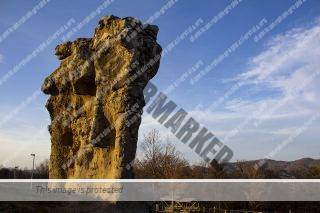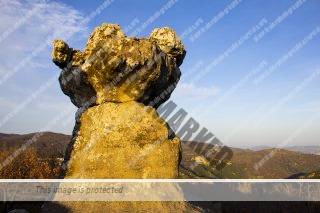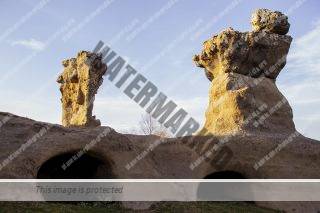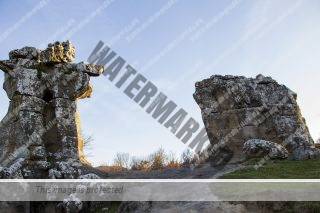Italian version 🇮🇹 Here
The population of Campana, a small town in the Cosenza area located on the Sila Grande, has always attributed the conformation of the Giants to the smoothing force of the wind.
Reaching the site is quite simple. From Camigliatello Silano along the road in the direction of Lake Cecita, past the Cupone Visitor Center, just take the SP 255 and follow the signs towards Campana. The state road, although winding, is in good condition and transit is easy by any means.

After a few kilometers from the Cupone Visitor Center, the route winds through the Fossiata Forest, one of the most fascinating woods in the entire Silano plateau. The place, in past years, was the nursery of the forest where the germination of various plants was experimented which made this forest truly fascinating.
In view of the town, just a few tens of meters from the road, the Giants of the Incavallicata will strike us with their majesty. The studies carried out on stone sculptures do not bring us back to a precise date, but surely the period is part of the phase prior to the Greek colonization of Calabria.
The two large blocks are about three meters apart. The first rock represents an elephant more than 5 meters high. The eyes, the trunk, the tusks and the legs of a rider on his back are recognized. The other colossus, on the other hand, seems to represent a human silhouette, probably a warrior, of which the lower part is preserved.
The architect Domenico Canino was the first to be interested in these megaliths.

He is convinced that the two sculptures can be dated back to around 12 thousand years ago, and that both are due to the hand of prehistoric men. To support Canino’s fascinating thesis, a discovery on the banks of the nearby Cecita lake, of elephant fossils.
In 2017, the archaeologists of the Superintendency were called to the Greek private fund to verify the discovery of alleged Lombard weapons. The long period of drought that affected the area greatly reduced the lake’s water, leaving much of the seabed uncovered. Among the mud, hidden for millennia, the remains of the prehistoric ancestor of the Elephas Antiquus.
The examinations of the technicians of the Superintendency have left no doubts: the bottom of Lake Cecita, for millennia has been the custodian of the remains of this wonderful specimen of Elephas antiquus; with a height of 4 meters at the withers and slightly arched tusks about three meters long. Typical characteristics of the species that inhabited Europe 700 thousand years ago, and which most likely inspired primitive men to build the stone Giants.
To contrast the studies of the architect Canino, the hypothesis of the cryptozoology scholar Lorenzo Rossi. According to the scholar, at the time of the alleged construction of the Campana monoliths, the Elephas antiquus had been extinct for several millennia, which is why prehistoric men could not have had a model to sculpt.
If the hypothesis supported by Canino were true, we are faced with unique objects in Europe. In fact, to find zoomorphic or anthropomorphic megaliths carved by human beings, one would have to go to Egypt or Turkey.
Mystery or suggestion, the dispute between the two scholars leaves many topics open for discussion, but what is certain is that the sight of the Giants of the Incavallicata will be a moment of great emotions for everyone.
Photographer: Marcello Pitardi
All photos are owned by © Marcello Pitardi
Remember to share this article with your friends on social media. If you want to stay updated on everything that happens on planetcolorphotography.altervista.org join the facebook group Planet Color Photography.


